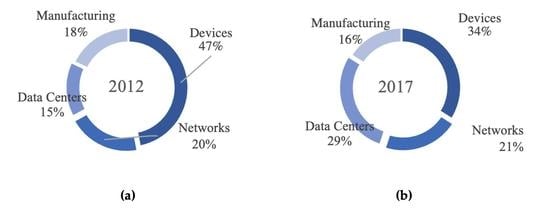4
The advent of easily accessible technology, e-commerce, online streaming, and social networking platforms has led to massive amounts of data being stored and processed every second. The IT infrastructures needed to support this digital age consume a large amount of energy and have a negative impact on the environment. There have been several different efforts to estimate the carbon footprint of the internet, but there is no proven exact method for it. Therefore, the goals of this paper are, first—to critically review the carbon emission calculation methods and compare the results, and second—to publicize the environmental impact of our daily simple habit of internet usage. We calculated the carbon footprint of the most popular four online services (TikTok, Facebook, Netflix, and YouTube) by using top-cited methods such those from Obringer, the Shift Project, Andrae, and Hintemann and Hinterholze. When comparing the emitted carbon dioxide, the weighted average of online video streaming usage per day is 51 times more than 14 h of an airplane ride. Netflix generates the highest CO2 emissions among the four applications due to its high-resolution video delivery and its number of users.


You don’t, you’re reading it correctly, they have their data on flights blatantly wrong. Eg. see this graph
I tried a carbon calculator, and it got about 0.94 tonnes, one way.
I can’t believe these numbers are right.